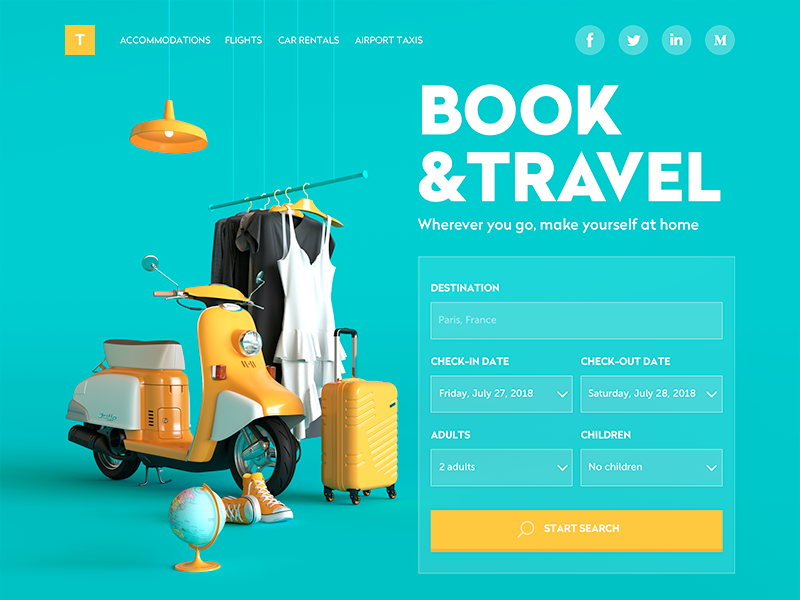The Most Effective Sorts Of Web Design to Enhance User Experience and Engagement
In the ever-evolving landscape of electronic interaction, the performance of website design considerably influences individual experience and engagement. Various layout methods, such as minimal, responsive, and interactive layouts, each deal distinct benefits that can accommodate diverse individual requirements. Comprehending which types of website design finest offer these goals can be pivotal for organizations intending to enhance client complete satisfaction and retention. Nevertheless, the question continues to be: which layout components truly reverberate with customers and foster meaningful interaction? The exploration of these concepts reveals essential insights that may redefine your technique to website design.
Minimal Web Layout
As digital landscapes become progressively cluttered, minimal Web style has become an effective method to boosting customer experience. This style philosophy focuses on simplicity, focusing on crucial elements while removing unneeded disturbances. By making use of enough white space, straightforward navigating, and a minimal shade combination, minimal design cultivates quality and directs user interest to essential content.
The core principle of minimal Web style is to create a seamless communication for users. By decreasing cognitive lots, individuals can promptly grasp info without really feeling overwhelmed. This direct approach not only improves use but likewise urges involvement, as site visitors are more probable to explore a site that is visually enticing and simple to navigate.
In addition, minimal design commonly highlights typography and imagery, making use of these aspects tactically to share messages effectively. This concentrate on crucial components can improve brand name identification and produce a memorable individual experience. In significance, minimal website design is not just a fad; it is a thoughtful approach that recognizes the value of user-centered design. By stripping away extraneous elements, developers can create an extra appealing, reliable, and delightful Web experience for all individuals.
Responsive Website Design
In today's diverse digital setting, responsive Web style has come to be important for producing a smooth individual experience throughout a wide range of devices. As individuals gain access to web sites on mobile phones, desktops, tablets, and laptops, the capability of an internet site to adapt its design and material to different display sizes and resolutions is vital.
Receptive website design employs flexible grids, images, and CSS media questions to make certain that Web content exists optimally, despite the gadget utilized. This method not only enhances the visual allure of a web site however likewise significantly improves use. Users are more probable to engage with a website that supplies a constant experience, as it eliminates the aggravation of having to focus or scroll excessively.
Furthermore, online search engine, including Google, focus on mobile-friendly sites in search rankings. By embracing responsive design, services can improve their presence and reach a broader target market. This technique additionally streamlines website upkeep, as a single version of the website can provide to all gadgets, reducing the demand for several variations. In summary, receptive Web style is an essential practice that boosts user experience, interaction, and overall fulfillment.
Interactive Website Design
Receptive website design lays the foundation for enhancing customer experience, yet interactive Web design takes this a step additionally by involving users in a much more vibrant means - Aligned Position Web Design. By incorporating aspects such as computer animations, clickable prototypes, and real-time feedback, interactive website design astounds individuals, drawing them right into a richer surfing experience
This strategy not just fosters interaction however additionally urges users to explore content actively instead than passively eating it. Strategies such as gamification, where customers gain incentives for finishing tasks, can dramatically boost the moment Recommended Reading invested on a website and boost total satisfaction. Additionally, interactive functions can simplify complex information, making it more absorbable and delightful.

Including interactive design aspects can additionally result in greater conversion rates, as individuals are most likely to involve with a website that proactively includes them. Aligned Position Web Design. Ultimately, interactive website design changes customer experiences into remarkable journeys, making sure that site visitors return time after time
Flat Style
Defined by its minimalistic strategy, level style emphasizes simpleness and functionality, removing unnecessary aspects and concentrating on important functions. This style approach focuses on functionality, making sure that customers can navigate user interfaces effortlessly and effectiveness. By utilizing a clean aesthetic, level design eliminates the mess often found in more ornate styles, consequently improving individual focus on content and functionality.
The characteristic of flat style lies in its usage of vibrant shades, easy typography, and geometric shapes. These aspects add to a visually appealing interface that is both modern-day and friendly. Additionally, level design fosters a sense of clearness, allowing users to discern important actions and details without diversion.
Moreover, flat layout is specifically efficient in responsive website design, as its simplicity converts well throughout various tools and screen dimensions. The lack of elaborate textures and slopes reduces filling times, which is crucial for preserving customer involvement. As electronic landscapes remain to evolve, level design stays a relevant option for creating straightforward sites that boost overall experience. By concentrating on crucial functions, level design not just meets individual demands however additionally encourages smooth communication, making it an important part of effective website design methods.
Flexible Website Design
Flexible website design personalizes the individual experience by developing numerous fixed layouts customized to various display sizes and tools. Unlike receptive layout, which fluidly readjusts a single layout, adaptive design employs unique designs for certain breakpoints, making certain optimal presentation on various platforms. This approach allows developers to concentrate on the distinct qualities of each device, enhancing usability by providing precisely what users need based on their context.
One of the key benefits of flexible Web design is its ability to enhance lots times and performance. By offering tailored content and images that fit the user's tool, internet sites can minimize information use and enhance loading rates. This is specifically beneficial for customers with slower links or restricted data strategies.

In addition, adaptive style facilitates a much more constant and regulated branding experience. Because developers develop discover here multiple designs, they can make certain that the visual aspects straighten with the brand's identity across various systems - Aligned Position Web Design. This results in a natural user experience, improving involvement and advertising user retention
Final Thought
Minimal style promotes clearness and emphasis, while receptive style makes sure versatility across various devices, advertising access. Jointly, these layout comes close to contribute to the creation of user-friendly settings that not only improve satisfaction yet additionally drive higher conversion rates, emphasizing their essential significance in modern Web layout methods.

Minimalist design fosters quality and focus, have a peek at this site while responsive design guarantees versatility across different gadgets, promoting accessibility. Jointly, these design approaches contribute to the production of easy to use settings that not just enhance complete satisfaction but additionally drive higher conversion prices, underscoring their crucial significance in modern Web style techniques.